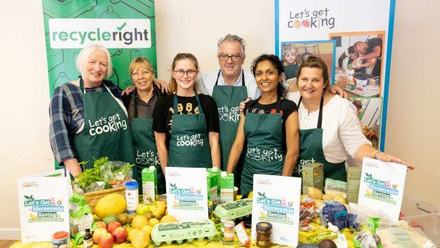Daylight hours are shorter over the winter months, with the winter solstice in December (shortest day and longest night) making this the darkest month of the year. If you need to lockdown or self-isolate, you might be forgiven for wishing you could curl up and hibernate! Isolation over winter could challenge even the best of us but eating as well as you can, will help to keep you body, mind, and mood all in great shape. Here are a few ideas to get you started.
Fruit and vegetables: Oranges, carrots, peppers and onions keep better than other fruits and vegetables, but frozen, juiced, canned and dried all count towards your 5 a day. Frozen vegetables, frozen fruit, canned beans, tomatoes, sweetcorn, fruit in juice and vegetable soups are all handy to have in store. One portion (80g) of canned beans can add to your 5 a day. Dried fruit such as figs, dates, sultanas, and apricots can brighten up a bowl of breakfast cereal and are a great snack too.
Rice, pasta, bulgur wheat and couscous are all handy store cupboard items. They keep well, can be used in a huge number of meals and are easy to cook. Microwave bags of rice or grains, although a little pricier are a very convenient standby.
Bread: Keep sliced wholemeal bread in your freezer. This can be taken out in slices as you need it and toasted from frozen. Half-baked wholegrain breads also keep well and are ready to bake as needed.
Breakfast cereals, another long-life product, are handy for more than breakfast as when combined with milk or yoghurt these make a tasty and nutritious snack or light meal.
Milk and dairy: Fresh milk has a reasonable fridge life but won’t take you through 14 days of self-isolation so keep cartons of long-life milk in store. Plain yoghurts, quark, fromage frais, cheese and kefir all keep well in the fridge. Top with fresh or dried fruit of your choice. Great for breakfast or as an any time of day snack.
Meat, fish and veggie options: Keey ready-portioned meat such as chicken, minced meat, pork, fish fillets, seafood and fishcakes in the freezer (if you have one). Canned fish are great to serve in sandwiches, on toast or with a salad for a tasty, nutritious lunch. Get inventive and add nuts and seeds to salads (bean, green or vegetable) and a variety of lunch and supper dishes.
Eggs make a great store cupboard staple as they are cheap and keep well, even if not refrigerated. Eggs are incredibly versatile and can be used as the base of lots of main meal recipes. Serve boiled, poached, fried, or scrambled and alongside nutrient-rich foods such as vegetables, salads, beans, and whole grains.
Foods containing vitamin D include oily fish such as salmon, sardines and mackerel, red meat, liver, egg yolks and fortified foods - such as some fat spreads and breakfast cereals. It’s hard to get enough vitamin D through food so everyone (including pregnant and breastfeeding women) should consider taking a daily supplement containing 10 micrograms of vitamin D.
Try to focus on both the quality and the amount of food you eat. Planning and preparation are key to help avoid the ‘I’ll just raid the fridge and cupboard and eat what’s there’ way of eating! Plan your meals and snacks for the week ahead and make a shopping list of what you need.
Many of us tend to eat for other reasons than hunger (for example, when we’re bored, thirsty, stressed, happy or sad) so when you next head for something to eat consider if that’s what you really want - perhaps it would be better to do a bit of at-home activity or run a hot bath and relax instead?






